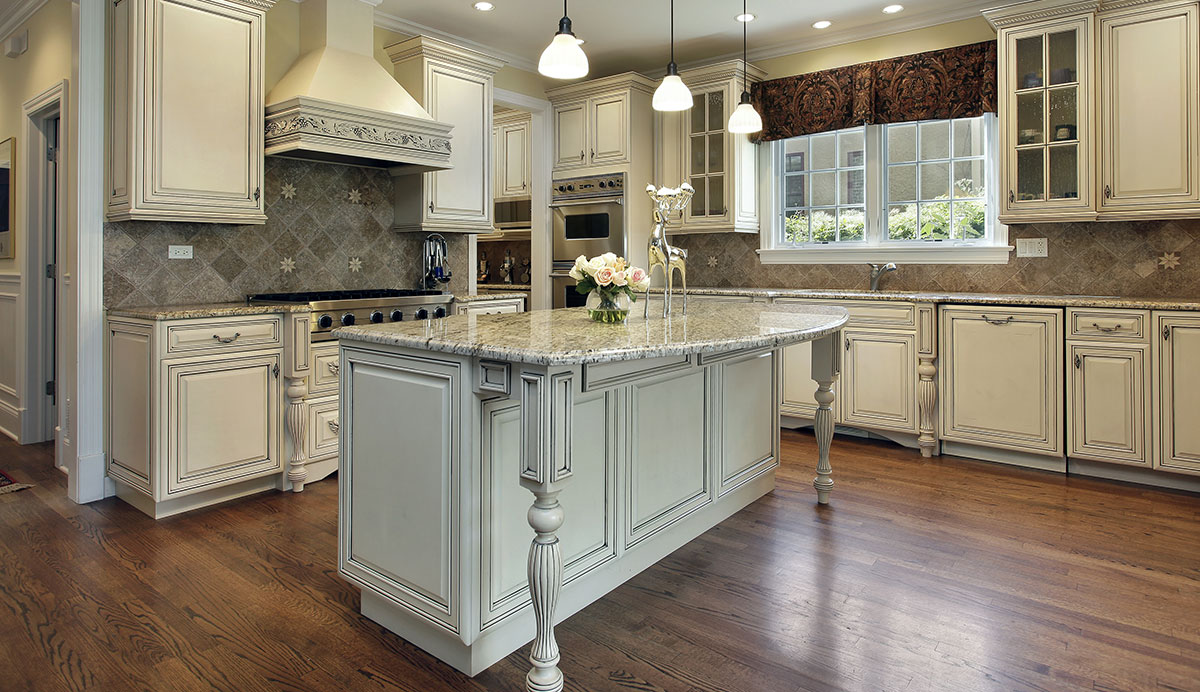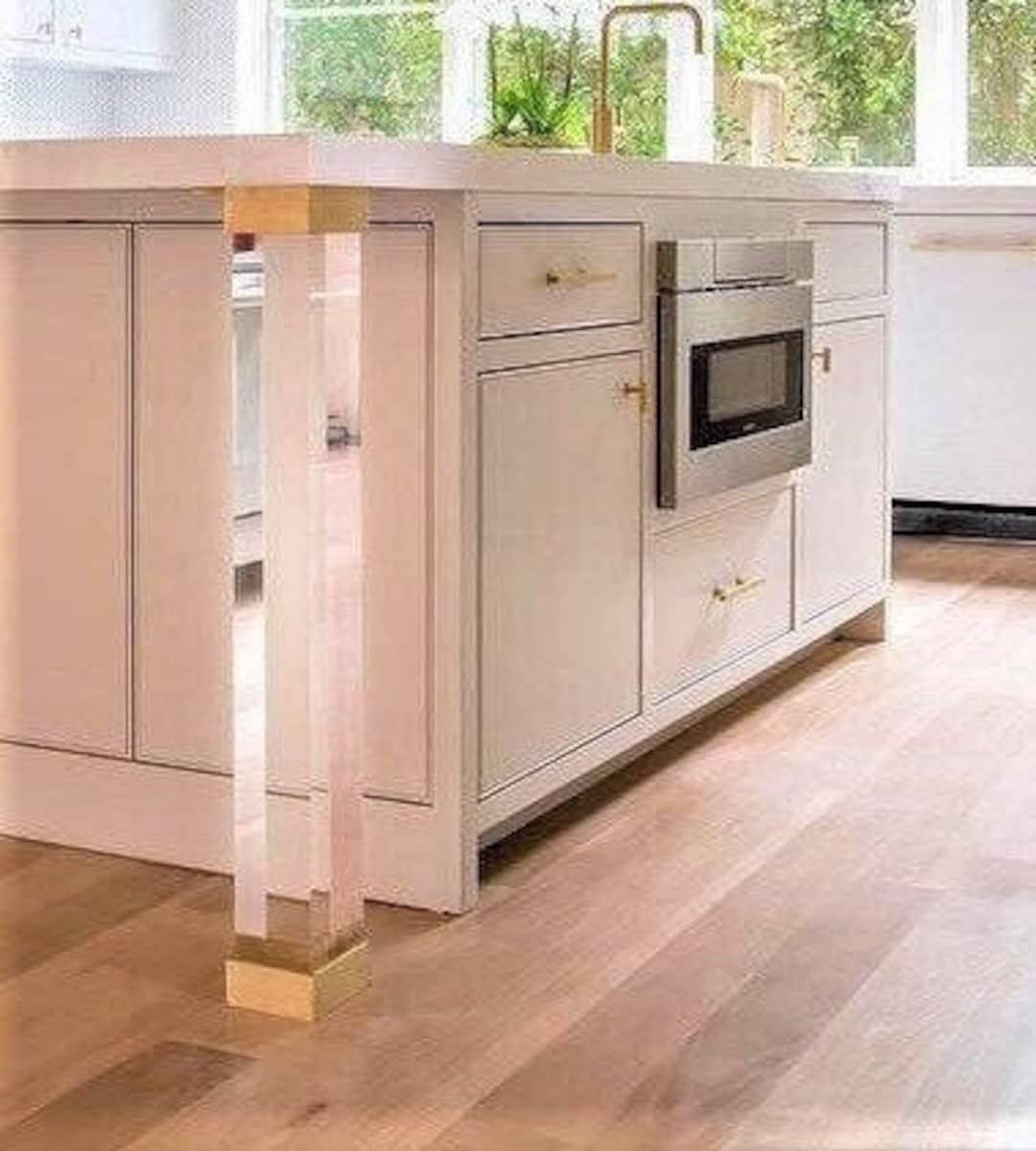Add Stability and Appeal with Sturdy Legs For Kitchen Island Setups
Add Stability and Appeal with Sturdy Legs For Kitchen Island Setups
Blog Article
Trick Factors To Consider for Discovering the Best Legs For Cooking Area Island for Your Layout
When choosing the optimal legs for your kitchen island, numerous crucial considerations enter into play that can dramatically affect both functionality and visual appeals. The selection of elevation, material, and design must straighten with your overall cooking area style to ensure an unified look. Furthermore, stability and upkeep requirements are critical for long-lasting usage and ease of treatment. Understanding these aspects can enhance your kitchen area's practicality and visual allure, but the nuances of each factor to consider can frequently be forgotten. What implications might these options carry your kitchen area's total atmosphere?
Determine Your Design Choice
Determining your style preference is critical when selecting the optimal legs for your kitchen area island. The legs of your kitchen island not only serve a functional purpose but also contribute considerably to the general aesthetic of the area. For that reason, determining your design style-- be it contemporary, rustic, conventional, or industrial-- is important.
For a modern cooking area, take into consideration streamlined, minimalistic legs that match clean lines and open spaces. In comparison, a rustic setting may profit from even more robust, farmhouse-style legs made of reclaimed products. Standard kitchen areas frequently favor transformed or elaborate legs, which can add a touch of elegance and refinement. At the same time, a commercial aesthetic could require metal legs that stress a raw, incomplete look.
Furthermore, take into consideration the elevation and proportion of the legs in relation to the island's surface. Eventually, your style preference will certainly affect not just the selection of legs yet additionally the total consistency of your kitchen's design.
Choose the Right Material
Selecting the best product for your cooking area island legs is crucial in ensuring both resilience and aesthetic charm. Different materials provide distinct advantages, and the choice frequently reflects your design preferences and functional needs.
Timber is a preferred selection, supplying heat and adaptability. It can be discolored or painted to match your kitchen decor, making it versatile to various designs, from rustic to contemporary. Wood may call for routine maintenance to preserve its look and honesty.

If you seek a special touch, take into consideration acrylic or glass materials. They can produce an impression of space and lightness in your cooking area, making them an excellent choice for smaller sized locations - Legs For Kitchen Island. However, these options may call for mindful handling and maintenance to avoid scratches.
Inevitably, the product you choose ought to line up with your kitchen area's total layout, ensuring that the legs serve both ornamental and practical functions.
Take Into Consideration Elevation and Percentages
When making a cooking area island, elevation and percentages play a critical duty in ensuring functionality and convenience,. The standard height for a kitchen island commonly varies from 36 to 42 inches, lining up with conventional counter elevations or bar heights, specifically. This measurement is important for integrating with bordering kitchen counters and feceses, enabling ease of usage throughout meal preparation and social communications.
Additionally, the island's percentages need to complement the total kitchen format. Think about the proportion between the island's size and size, ensuring it supplies sufficient surface location without crowding the kitchen area.
In addition, the height of the legs or base can affect the visual allure and performance. Taller legs may offer a much more modern-day, airy feeling, while shorter ones can stimulate a traditional, based look. Ultimately, meticulously thinking about elevation and proportions will certainly result in a kitchen area island that is both aesthetically appealing and functionally reliable, improving the total design of the area.
Assess Stability and Toughness
A kitchen island's legs should not just complement its height and percentages yet also supply ample stability and sturdiness to sustain day-to-day activities. The legs are vital to the overall capability of the island, as they bear the weight of the countertop and any type of additional loads, such as appliances or food preparation tasks.
When examining security, it is crucial to consider the leg style and material. Sturdy metal or solid hardwood legs often offer exceptional strength compared to lighter materials like crafted timber or plastic. In addition, a bigger base can boost security, lowering the danger of tottering or tipping during use.
Resilience is equally important; the legs should stand up to damage from day-to-day usage. Think about finishes that protect versus scrapes, dents, and moisture, especially in a cooking area setting. Assess the top quality of building and construction, such as fastenings and joints, which can dramatically affect the legs' long-term efficiency.
Eventually, purchasing well-crafted legs that focus on stability and durability will certainly ensure your cooking area island stays a reputable workspace for several years to come, boosting your culinary experiences while keeping aesthetic allure.
Element in Upkeep and Care
Upkeep and care are essential factors to consider for ensuring the durability and performance of kitchen area island legs. When picking legs, it is vital to evaluate the materials made use of, as different alternatives require differing degrees of upkeep. For example, wood legs may call for periodic refinishing or securing to stop moisture damage and scrapes, while steel legs may need regular brightening to maintain their luster and prevent rust.
In addition, the finish put on the legs can affect upkeep demands. A high-gloss covering may be much easier to tidy but could show scrapes and finger prints extra readily than a matte finish. It is recommended to select products and surfaces that enhance your way of see living; for instance, if you regularly host gatherings, go with resilient materials that can endure deterioration.
Furthermore, think about the cleaning process included in preserving these legs. Smooth surfaces frequently need minimal effort, while elaborate designs may gather dirt and crud, demanding even more labor-intensive cleaning techniques. Legs For Kitchen Island. Ultimately, factoring in the upkeep and treatment needed for your selected kitchen island legs will not just boost their visual charm but also guarantee their practical stability in time
Conclusion
To conclude, picking the ideal legs for a kitchen area island necessitates careful factor to consider of different elements, including layout style, material choice, security, maintenance, and elevation. Each element plays an essential duty in making sure that the legs not just boost the visual appeal of the kitchen area however also offer the essential assistance and durability for daily use. A well-informed decision will ultimately add to a practical and visually pleasing cooking area setting.
The legs of your cooking area island not just serve a functional function but likewise add substantially to the overall aesthetic of the room.Maintenance and treatment are crucial factors to consider for ensuring the long life and performance of kitchen area island legs. Wood legs may need routine refinishing the original source or sealing to avoid dampness damage and scratches, while steel legs might need routine brightening to maintain their shine and stop corrosion.
Ultimately, factoring in the maintenance and treatment needed for your chosen kitchen area island legs will certainly not just enhance their have a peek at this site aesthetic charm yet additionally ensure their practical stability over time.

Report this page